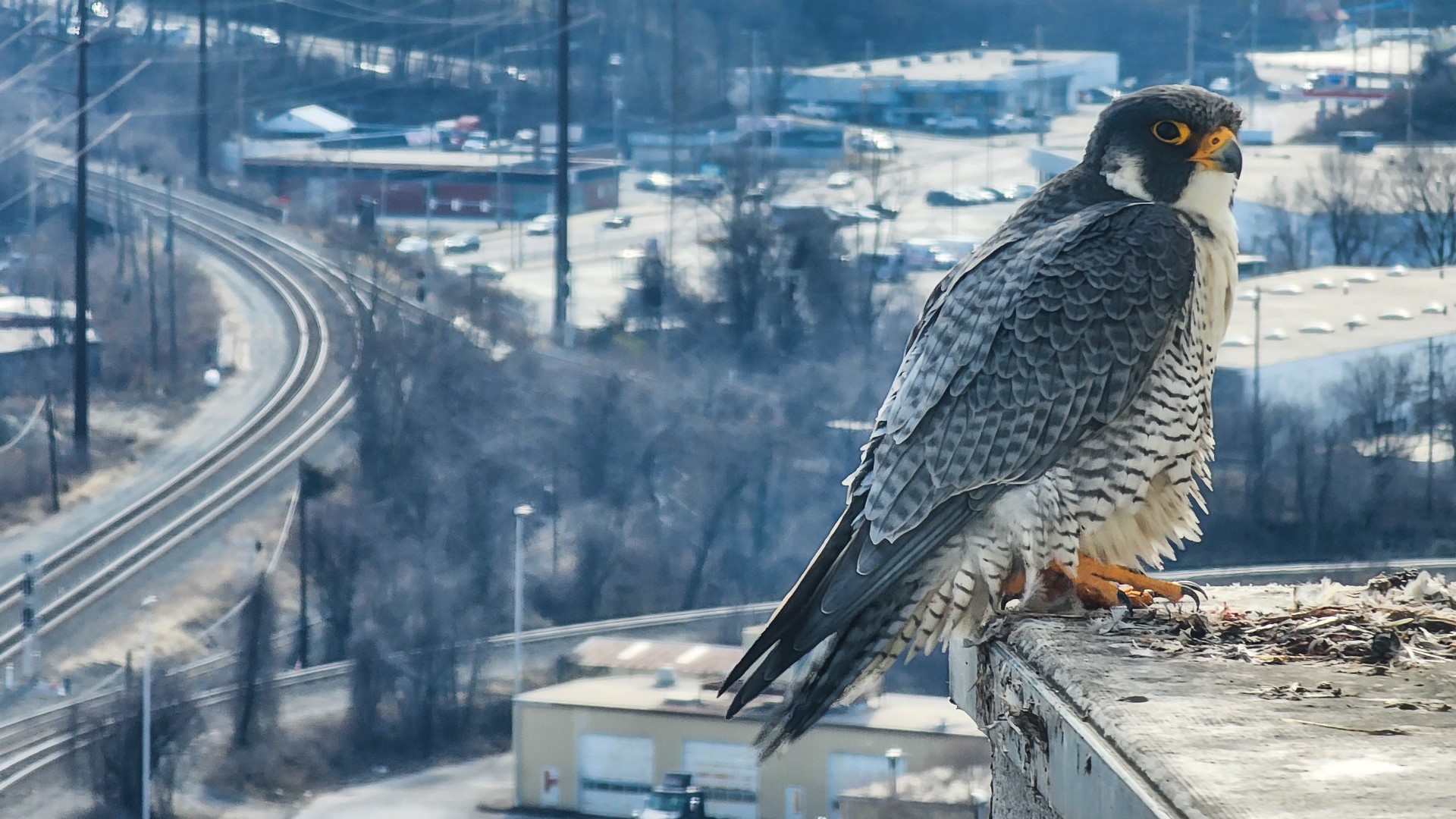HARRISBURG, Pa. — Twenty-three years after the first peregrine falcons nested in downtown Harrisburg, another generation of the birds is making their home on the Rachel Carson State Office Building (RCSOB).
"In these urban sites, there's very [little] predation," Bert Myers, director of environmental education at the Pennsylvania Department of Environmental Protection (DEP) said. "They don't have great horned owls, for example. And they are a major predator of peregrine falcons."
The building became a nesting site years after Pennsylvania's Rachel Carson published research in 1962 titled "Silent Spring," in which she warned the scientific community of the dangers of the indiscriminate use of pesticides.
Peregrine falcons were driven to the brink of extinction when persistent organic pollutants such as DDT caused the lining of their egg shells to thin.
The birds were listed as a federally endangered species in 1973 and added to Pennsylvania's threatened list. After the species recovered a bit, it was removed from the federal list in 1999 and Pennsylvania's list in 2021. The peregrine falcon is protected under the Game and Wildlife Code and the Migratory Bird Treaty Act of 1918 in the commonwealth today.
The current mated pair has laid three eggs so far this nesting season. Officials with the DEP say the female could lay up to two more eggs in the coming days.
Both falcons currently nesting on the Market Street building were banded as hatchlings, meaning the DEP has been able to study them for much of their lives.
"Because of banding, we can trace the lineage of these birds pretty effectively," Meyers said.
The female falcon, known as 09/BS, hatched in 2017. Her grandparents were the former dominant pair and her grandmother nested on the same State Office Building from 2000-2010.
The current male, 85/AK, was first seen around the RCSOB in 2021. He and his mother hail from Philadelphia.
Myers says the birds can be banded when they lose their white, fluffy down and start growing their adult feathers. Once they get close to adult size, the DEP can band them.
"The biologists will go out, they'll get the birds, bring them inside the building," Myers said. "We band them, give them a health check—check them over real quick—and then we place them back into the nest and we're all good to go."
Visit the DEP here to stay up to date on 09/BS and 85/AK's progress. A livestream of the nesting site is also available. Keep an eye out for any more eggs!

